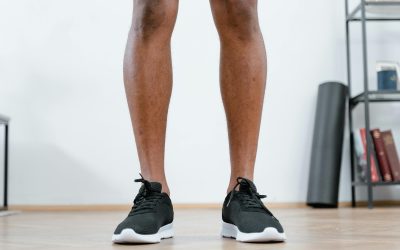Running is a highly popular way to stay active. Many find the experience enjoyable, and enthusiasts say that it’s great for one’s cardiovascular health, mental clarity, and maintaining a healthy weight. Plus, its versatility means you can do it virtually anywhere.
But if you’ve been diagnosed with varicose veins, you might be unsure about whether it’s safe for you to run.
These swollen, twisted veins can sometimes be more than just an aesthetic concern—they can cause discomfort, pain, and sometimes even lead to more serious health issues, so it’s understandable that a runner would have questions about how to safely continue running while dealing with them.
As vein specialists in the Milwaukee, Wisconsin area, we understand how frustrating it can be to manage varicose veins while staying active.
In this article, we will talk about whether running with varicose veins is safe, how to ensure safety when running with varicose veins, and other exercises that may reduce vein risks.
Can You Run with Varicose Veins?
The short answer is yes, you can run with varicose veins.
In fact, running and other forms of exercise can be beneficial for your vein health. When you run, your leg muscles contract, helping to push blood through your veins and reduce the pressure that can cause varicose veins to worsen.
However, it’s important to listen to your body. If you experience pain, swelling, or other symptoms, it may be time to take a break or adjust your routine.
It’s also worth noting that while running is generally safe, the impact on your legs can vary depending on the severity of your varicose veins. Some runners may find that high-impact activities like running can exacerbate their symptoms, while others might not notice any issues at all.
If you’re unsure about how running might affect your veins, it’s a good idea to consult a vein specialist and/or a personal trainer. Combined, they can assess your condition and provide personalized guidance on how to continue running safely.
How to Better Manage Varicose Veins When Running
Managing varicose veins while running requires a thoughtful approach, but thankfully, there are a lot of tools and methods that can help.
Compression stockings can be incredibly helpful, as they apply gentle pressure to your legs, supporting your veins and promoting better blood flow. It’s important to choose the right level of compression, so consulting a vein specialist to find the perfect fit is a good idea.
Additionally, paying attention to your running surface can make a difference. Running on softer surfaces like grass or a track can be gentler on your legs compared to concrete or asphalt, which can help reduce the strain on your veins.
It’s also important to stay hydrated and maintain a healthy diet. Drinking plenty of water keeps your blood flowing smoothly, and a diet rich in fiber, fruits, and vegetables can help maintain a healthy weight and prevent additional pressure on your veins. Foods high in flavonoids, such as berries and citrus fruits, can improve circulation and reduce swelling.
Taking breaks and raising your legs after running can help alleviate discomfort. Elevating your legs above your heart allows blood to flow back toward your heart more easily, reducing pressure in your veins.
If varicose veins are causing you pain or affecting your ability to run, you should seriously consider consulting a vein specialist right away.
As vein specialists in Milwaukee, Wisconsin, we offer various treatment options, from lifestyle changes to medical procedures like sclerotherapy or laser treatments. Early intervention can prevent varicose veins from worsening, helping you continue running without pain.
Other Exercises You Could Try
If you want to alternate between high-impact and low-impact exercises so as to not strain your veins too much, your choices are plentiful.
For example, swimming is a great way to stay active, improve cardiovascular health, and even greatly help with blood circulation while giving your veins a break.
In addition to swimming, you might consider other low-impact exercises like hiking or walking, which allow you to enjoy the outdoors while still getting a good workout.
Cycling is another great option, as it offers a smooth, consistent motion that strengthens your legs without overloading your veins. Yoga and Pilates are also highly beneficial, focusing on flexibility, strength, and controlled movements that can help alleviate pressure on your veins.
Final Thoughts
Running with varicose veins is not only possible, but it can also be beneficial for your overall health, provided that you manage it carefully. The key is to stay attuned to your body’s signals and make adjustments as needed.
It’s important to remember that maintaining your vein health is a long-term commitment. Regular check-ins with a specialist can help you monitor your condition and make any necessary changes to your routine.
As vein specialists in Milwaukee, Wisconsin, we’re here to support you in finding the right balance between staying active and managing your vein health.
If you have any questions or concerns about your vein health, or if you’re experiencing symptoms that worry you, don’t hesitate to reach out.



